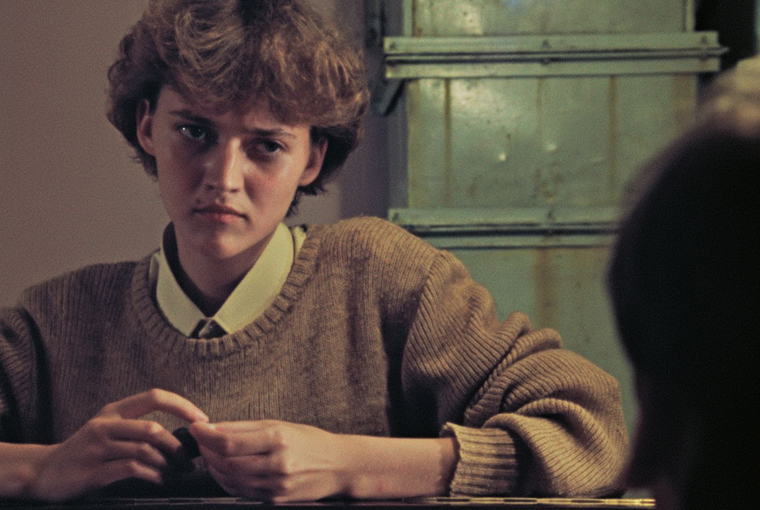
Watching a film taking place, say, in the 1930s, and spotting graffiti, air-conditioning units, or contemporary vehicles can shatter the illusion of time-travel such a film may wish to create. Historical inaccuracies usually go unnoticed, occasionally distract, and only rarely amuse a small group of anachronism hunters racing to be the first to spot them. But there may be a different type of anachronism. A surge in demand for period films, technological advancements, and resources devoted to archival research have turned the art of historical recreation into a flourishing sub-industry of cinema. There are films where nothing seems out of place, where costumes, furniture, vehicles, the way that actors speak and the language they use are consistent with a period; where even the treatment of light, framing, lens choices, and overall cinematography resemble the filmmaking practices of the era. And yet, many recent historical films still look gaudily contemporary. Movies sometimes feel like a retro bicycle: everything looks old until it starts moving.
Film scholars Elena Caoduro and Stefano Baschiera recently categorized anachronistic aesthetics alongside faux-vintage and retro approaches in their taxonomy of “vintage cinema.” They cite, among others, American Hustle and The Great Gatsby to describe “faux-vintage” as “present-day products that are created to resemble an artefact of the past but that can meet the demands of contemporary consumers …. As far as cinema is concerned … this manifests as conscious visual archaism …. The filmic texts belonging to this category mimic the imperfection of analogue media and try to hide their digital status, pretending to be from a different decade.” Sergei Loznitsa’s Two Prescutors, which we reviewed this month, falls into this category. It simply squeezes everything into a 1.37:1 aspect ratio. The boxy framing, static camera, and dioramic staging give the film the faux-vintage vibe, but with everything else, from the acting to the lighting to the props, being so blatantly out-of-era, the film’s vintage aesthetic slips into kitsch.
Another recent faux-vintage movie is Brady Corbet’s The Brutalist. Much has been written about the anachronisms in this film, for example the ways in which it confuses architectural styles and epochs. Little has been written, however, about whether and why such anachronisms are problematic. Two scenes in The Brutalist invite comparison. In the first, Bauhaus-trained architect László Toth (Adrian Brody) works in a coal-loading facility shortly after arriving in the United States. He moves through a landscape of steel girders, conveyor belts, and angular supports. The setting is dim and metallic and the camera frames the structures with architectural clarity: beams intersect at rigid angles, light filters in planes. László appears small against the scale of the industrial environment. Much later, the film shows a marble quarry in Carrara, where he looks for material to build an altar inside of the chapel in the Van Buren Institute. The marble quarry, too, is structured by scaffolding, stone walls, and carved grids. The scenes link the brutality of labor and industry with the austerity and ambition of mid-century architecture. They establish visual parallels between Tóth’s harsh experiences as an immigrant – shoveling coal, and struggling under the thumb of an unwelcoming American elite – and his creative ambitions.
In reality, Bauhaus figures like Walter Gropius and Marcel Breuer arrived in Massachusetts in the mid-1930s as celebrated designers, not as starving exiles. Gropius fled Nazi Germany via England and reached the United States in 1937, where Harvard’s Graduate School of Design welcomed him with a teaching post and major commissions. Breuer followed closely, joining Harvard’s faculty and securing significant projects. That a consciousness for industrial structures was essential to Bauhaus aesthetics (as well as to Brutalism) is undisputed. However, in the visual language of The Brutalist, the relation to industry lacks the architectural meaning it had for Bauhaus. Instead, it becomes part of a very American obsession with a rags-to-riches narrative and is thus reduced to a prop (in a somewhat perverse gesture, since a major ideological campaign of modernist architecture was to get rid of ornaments). In other words, the girders and scaffolds in The Brutalist function like exposed pipes and brick walls in industrial chic: they lose their original function and become decorative.
Siegfried Kracauer warned that historical films often serve as spectacles that conceal our present troubles. Both The Brutalist and Two Prosecutors wrap contemporary conflicts in retro fabric. In The Brutalist, the ongoing war on Gaza lurks in the background. Tóth is Jewish, his chapel commemorates Holocaust survivors, and in one scene his daughter and her husband announce around the dinner table that they plan to make Aliyah (return to Israel) in order to be liberated, with Tóth and his wife ultimately following suit. At a moment when Israel is being accused of inflicting the very kind of destruction it once endured, framing Israel as a destination of hope is questionable at best. In Two Prosecutors the crimes are Stalin’s, but the fear is Putin’s, which serves up easy moral identification.
Faux-vintage offers history as ornament, leaving the present comfortably unchanged. If, then, one were to define faux-vintage aesthetics in a more Kracauerian spirit, its purpose is to reproduce historical appearances without the discomfort of history itself. Genuine (as in “not faux”) historical representation would perhaps try harder to grapple openly with these implications.
***
In this month’s issue, Moritz Pfeifer discusses the gaudy aesthetic of Sergei Loznitsa’s above-mentioned Two Prosecutors. At the recent Karlovy Vary International Film Festival, he also saw Dmytro Hreshko’s Divia about the ecological toll of Russia’s invasion of Ukraine, and Srdan Golubović and Ivan Knežević’s Absolute 100, a mini-series that follows a young woman who takes charge of her life, gun in hand. Colette de Castro reviews Masha Chernaya’s The Shards, a cinematic seismograph that captures the mood in a country waging war. Finally, at the Transilvania International Film Festival, Margarita Kirilkina saw Smile at Last, a 1985 Estonian feature by Leida Laius and Arvo Iho that portrays the youth beyond state sanctions.
We hope you enjoy our reads.
Konstanty Kuzma & Moritz Pfeifer
Editors




Leave a Comment